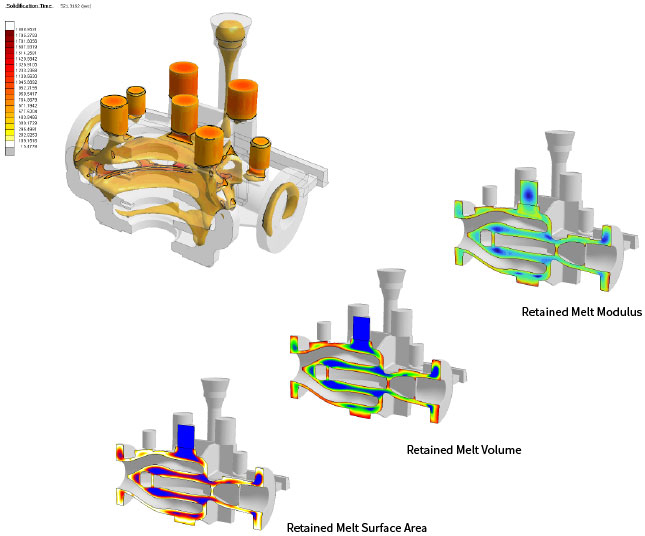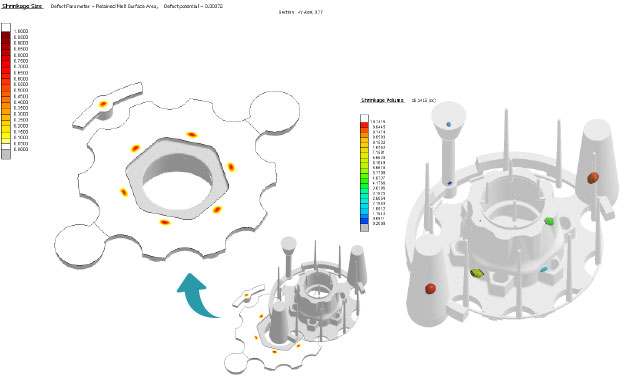Sand Casting introduction PDF file will bring you more
technical contents.

Sand Casting
Download
Shrinkage
Prediction
Predicting solidification shrinkage defect through casting analysis requires accurate temperature calculations and a process of tracking retained melt areas with high defect rates during solidification. AnyCasting’s shrinkage defect prediction is based on accurate temperature calculations considers the Fs-T Curve, calculating the overall solidification pattern and the surface area, volume, and modulus of the retained melt while calculating the results such as temperature distribution and cooling rate. All these things have been implemented for the user to have various methods of observation.

Tracking of Isolated Melt Areas
during Solidification
- Predict retained melt areas during solidification
- Shrinkage defect analysis based on surface area, volume, and modulus of retained melt
- Accurate temperature calculation using Fs-T Curve
Shrinkage
Size & Volume
Shrinkage defects occur during solidification and usually occur in the final solidification area. In other words, in order to accurately predict shrinkage defects, flow/solidification analysis by accurate temperature calculation is required. The solidification calculation considers the Fs-T Curve as well. When predicting shrinkage defects, a method that tracks volume, surface area, and modulus of retained melt is used and to predict micro shrinkage, the typical Niyama Criterion is used. AnyCasting also has a feature called Shrinkage Volume which takes into consideration the type of alloy and its shrinkage rate in the final solidification area.

- Predict accurate solidification pattern considering the Fs-T Curve for each melt material
- Predict shrinkage defect based on tracking the retained melt area during solidification
- Easily observe the shrinkage defect area using the probability distribution method
- Predict shrinkage defect volume based on shrinkage rate of materials used


